Let’s step back in time and journey to a land of warriors, queens, and legends. Before modern African borders, the continent was a tapestry of vibrant cultures and powerful kingdoms.
From the dazzling gold of the Ashanti Empire to the mysterious monuments of the Kingdom of Kush, ancient Africa was a place of unparalleled richness and diversity.
Although Africa was divided during the 1886 Berlin Conference, it used to be a continent of kingdoms.
Come with us as we explore the stories, myths, and marvels of ancient African civilizations, and uncover the enduring legacy they left for us to discover.
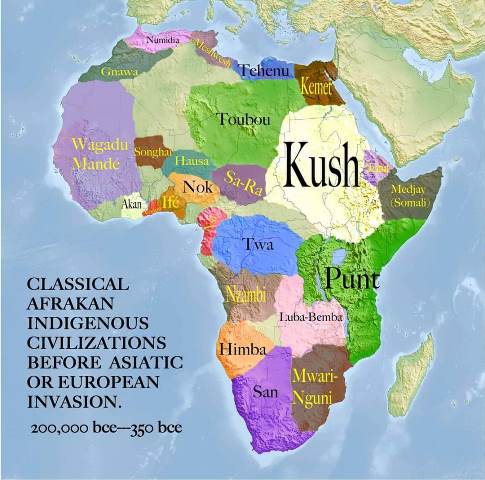
The Kingdom of Kush
The Kingdom of Kush was located in the Nile River Valley. It stretched from the First Cataract of the Nile in the north to the confluence of the Blue and White Nile rivers in the south. The kingdom’s strategic location allowed it to control trade routes that passed through the region. This made it an important center for commerce and cultural exchange.
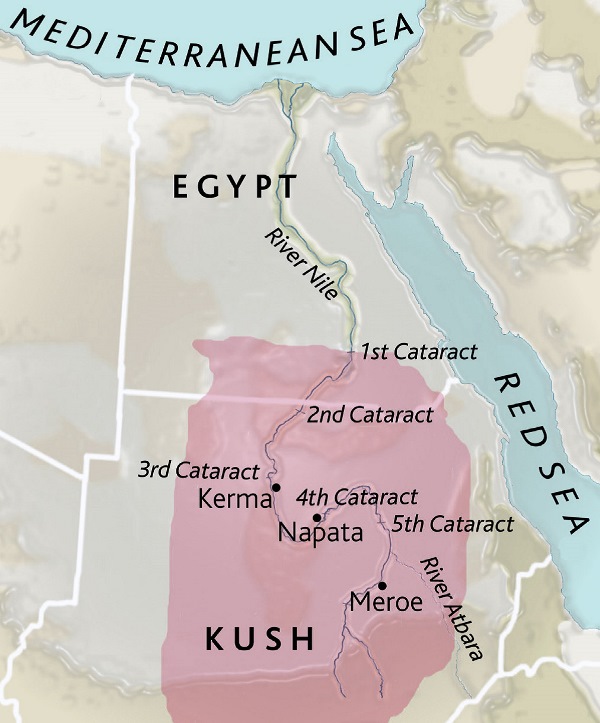
History and Development
The Kingdom of Kush began as a small settlement around 2500 BC, and by 1700 BC, it had grown into a significant power in the region. Over the centuries, the kingdom went through several phases of development, each marked by advances in agriculture, trade, and technology.
In the 8th century BC, the kingdom reached its peak under the rule of King Piye, who conquered Egypt and established a Kushite dynasty in the country. The Kushites adopted many aspects of Egyptian culture, including their religion, art, and language, and incorporated them into their own culture.
Culture and Society
The Kushites were a diverse group of people who spoke several different languages and were united under a common political system.
Moreover, their society was highly stratified, with a ruling class of kings and nobles at the top and commoners at the bottom. The kingdom’s elite lived in elaborate palaces and tombs, which were decorated with intricate carvings and paintings.
In addition, the Kushites were known for their rich cultural traditions, including their religion, which was a blend of Egyptian and traditional African beliefs.
They also worshipped a pantheon of gods and goddesses. These gods were believed to control various aspects of nature and human life. The Kushites also had a complex burial tradition, which involved mummification and the construction of elaborate pyramids and tombs.
Read: The 7 Most Influential African Empires
Legacy
The Kingdom of Kush had a lasting impact on African history and culture. Its influence can be seen in the art, architecture, and religion of ancient Egypt, as well as in the cultural practices of present-day Sudan.
Kushites were renowned for their metalworking skills, which produced intricate jewelry and weapons. Interestingly, they were popular for their advanced irrigation systems, which allowed them to cultivate crops in the arid region.
The Kushite legacy also includes the pyramids of Meroe, which are some of the most impressive ancient structures in Africa. These pyramids were built by Kushite kings and nobles and were decorated with intricate carvings and paintings. This no doubt provides a glimpse into the kingdom’s rich cultural heritage.
The Empire of Ghana
The Empire of Ghana was located in present-day Mauritania and Mali, covering an area of approximately 1 million square kilometers.
Ghanaian Empire was situated along the Niger River, providing a vital water source for agriculture and transportation. The region’s terrain varied from desert in the north to savannah and forests in the south.
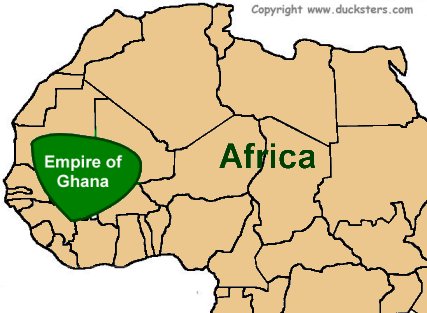
History and Development
We Design & Develop Websites, Android & iOS Apps
Looking to transform your digital presence? We specialize in creating stunning websites and powerful mobile apps for Android and iOS. Let us bring your vision to life with innovative, tailored solutions!
Get Started TodayThe Empire of Ghana emerged around the 6th century as a small kingdom and gradually grew in power and influence. Ghana was known for its sophisticated trade networks, which included gold, ivory, and salt, among other goods.
Additionally, Its strategic location made it a key center for trade between North Africa and sub-Saharan Africa, which contributed to its economic and political success.
Ghana’s rulers were skilled in diplomacy and were able to maintain strong relationships with neighboring kingdoms and empires. They also developed a strong military, which helped them to expand their territory and fend off external threats.
Culture and Society
The empire’s rulers were known for their wealth and extravagance. This was reflected in their elaborate clothing, jewelry, and architecture.
Additionally, the people were known for their expertise in metalworking, particularly in the production of gold and iron. They also had a rich oral tradition, which included storytelling and poetry.
Legacy
The Empire of Ghana left a significant legacy in West Africa and beyond.
Ghana’s rulers also set an example of solid and effective leadership, which was emulated by other West African kingdoms and empires.
The empire’s influence can be seen in the architecture of the region. This is particularly evident in the mud-brick structures that were a hallmark of Ghanaian design. The empire’s metalworking tradition also continued to thrive after its decline, with skilled artisans producing intricate jewelry and other decorative items.
The Kingdom of Mali
Home to present-day Mali, Guinea, Senegal, and Niger, the Kingdom of Mali covered an area of approximately 1.4 million square kilometers. The empire was situated along the Niger River, which provided a vital source of water for agriculture and transportation. The region’s terrain varied from desert in the north to savannah and forests in the south.
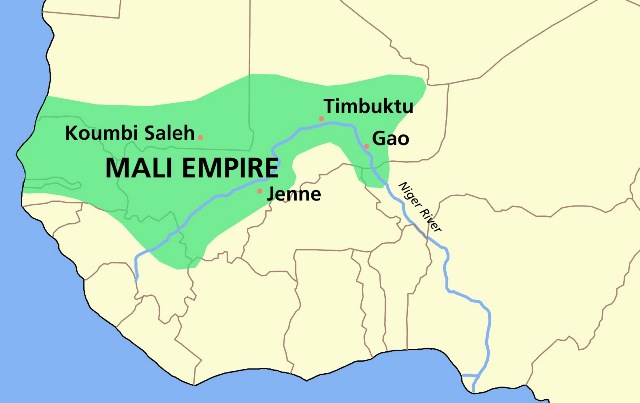
History and Development
Ancient Mali is one of the most notable African kingdoms before the modern states. It emerged from the Kingdom of Ghana in the 13th century.
Mali’s founder, Sundiata Keita, established a strong centralized government and expanded the empire’s territory through military conquest and diplomacy. Under his leadership, the empire grew to include parts of present-day Mauritania, Senegal, Gambia, Guinea, Mali, Burkina Faso, Niger, and Nigeria.
The rulers were known for their wealth and extravagance, which was reflected in their elaborate clothing, jewelry, and architecture.
The empire was also renowned for its sophisticated trade networks, which included gold, salt, and other goods. Mali’s strategic location on the Niger River made it a key center for trans-Saharan trade, which contributed to its economic and political success.
Culture and Society
Mali’s society was highly structured, with a ruling class of kings and nobles at the top and commoners at the bottom. The empire’s rulers were known for their patronage of art, literature, and architecture, which included the construction of mosques and other important buildings.
Ancient Malians were known for their expertise in metalworking, particularly in the production of gold and copper. They also had a rich oral tradition, which included storytelling and music. Islam was the dominant religion in Mali, and the empire was known for its tolerance and religious pluralism.
Read: How Timbuktu Thrived During Islam’s Golden Age
Legacy
The Kingdom of Mali left a significant legacy in West Africa and beyond. Mali’s rulers also set an example of solid and effective leadership, which was emulated by other West African kingdoms and empires.
We Design & Develop Websites, Android & iOS Apps
Looking to transform your digital presence? We specialize in creating stunning websites and powerful mobile apps for Android and iOS. Let us bring your vision to life with innovative, tailored solutions!
Get Started TodayThe empire’s influence can be seen in the architecture of the region. Present-day Mali still has mud-brick structures that were a hallmark of Malian design.
Its metalworking tradition also continued to thrive after its decline, with skilled artisans producing intricate jewelry and other decorative items.
Perhaps the most famous legacy of the Kingdom of Mali is the story of Mansa Musa, the empire’s ninth ruler. Musa’s pilgrimage to Mecca in 1324, during which he distributed vast amounts of gold and other gifts, is said to have made him one of the wealthiest people in history. This event helped to cement Mali’s reputation as a center of wealth and power.
Read: Mansa Musa: The Downfall of the Richest Man in History
The Kingdom of Axum (Aksum)
Axum, another of the most powerful African kingdoms before modern African borders, emerged as a regional power around the 1st century CE, following the decline of the Kingdom of Kush. Axum’s early history is shrouded in myth and legend. But it is believed that the kingdom’s rulers were descended from the son of the Queen of Sheba and King Solomon of Israel.
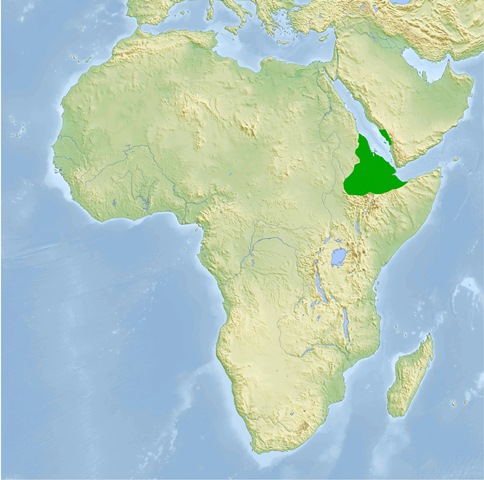
Under the leadership of King Ezana, who ruled in the 4th century CE, the Kingdom of Axum began to expand its territory through military conquest and diplomacy. The empire reached its height in the 4th and 5th centuries CE. Then, it controlled large parts of present-day Ethiopia, Eritrea, Sudan, Yemen, and Saudi Arabia.
Axum’s rulers were known for their wealth and power. This was reflected in their elaborate architecture, including towering obelisks and impressive palaces. The kingdom was also renowned for its sophisticated trade networks, which included ivory, gold, spices, and other luxury goods.
Culture and Society
The empire’s rulers were known for their love for art, literature, and architecture. These included the construction of impressive religious sites, such as the Church of Our Lady Mary of Zion.
Ancient Axum people were famous for their expertise in agriculture and the cultivation of crops. These crops included coffee, teff, and barley. They also had a rich tradition of music and dance, with traditional instruments such as the krar and the masinko.
Additionally, Axum was one of the first African kingdoms to adopt Christianity as its official religion. Christianity became a unifying force in Axum, bringing together people from different regions and ethnic groups.
Legacy
The Kingdom of Axum left a significant legacy in East Africa and beyond. Axum’s rulers also set an example of solid and effective leadership, which was emulated by other African kingdoms and empires.
In addition, the empire’s influence can be seen in the architecture of the region, particularly in the towering obelisks and other impressive structures that were a hallmark of Axumite design.
The kingdom’s adoption of Christianity had a lasting impact on the region. As such, Ethiopian Christianity continued to be an important cultural and religious tradition.
Read: The Ethiopian Empire and Its Resistance to Colonialism
Perhaps the most famous legacy of the Kingdom of Axum is the legend of the Queen of Sheba. It has been immortalized in literature and art for centuries.
The story of the queen’s visit to King Solomon and their subsequent romance is a testament to the enduring cultural and historical significance of the Kingdom of Axum.
Before you go…
Hey, thank you for reading this blog to the end. I hope it was helpful. Let me tell you a little bit about Nicholas Idoko Technologies. We help businesses and companies build an online presence by developing web, mobile, desktop, and blockchain applications.
We also help aspiring software developers and programmers learn the skills they need to have a successful career. Take your first step to becoming a programming boss by joining our Learn To Code academy today!
Put Your Tech Company on the Map!
Get featured on Nicholas Idoko’s Blog for just $200. Showcase your business, boost credibility, and reach a growing audience eager for tech solutions.
Publish Now










